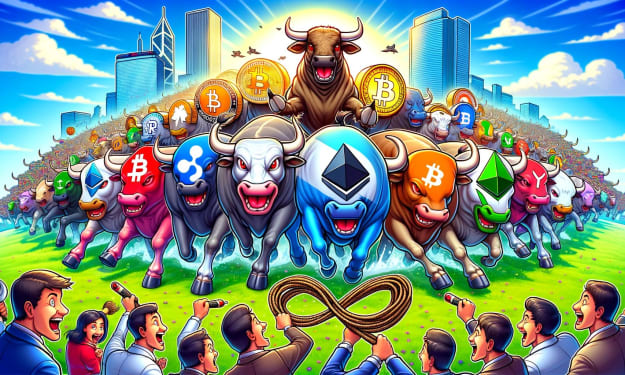Exploring the Technology Stack for NFT Marketplace Development
Tech Stack For NFT Marketplace Development

The rise of Non-Fungible Tokens (NFTs) has created a buzz in the digital world. NFTs have opened up new possibilities for buying, selling, and trading unique digital assets such as art, music, sports, and gaming. The NFT marketplace has become a flourishing industry with immense potential for growth. However, building an NFT marketplace requires careful consideration of the technology stack that will be used. In this blog, we will explore the critical technology stack components for successful NFT marketplace development.
How does the NFT marketplace work?
An NFT marketplace is a platform where creators can mint and sell their unique digital assets as Non-Fungible Tokens (NFTs). NFTs are digital assets that are stored on a blockchain, making them unique and tamper-proof. Each NFT has a unique identification code that verifies its authenticity and ownership.
The process of buying and selling NFTs on a marketplace is relatively straightforward. Here's how it works:
Creation of NFT: The creator of the digital asset creates an NFT by minting it on a blockchain, usually the Ethereum blockchain. The creator can specify the properties of the NFT, such as its name, description, image, and any additional metadata.
Listing on Marketplace: The creator lists the NFT on a marketplace, setting a price for it. The marketplace usually charges a fee for listing and selling NFTs.
Buying NFT: A buyer who is interested in the NFT visits the marketplace and finds the NFT they want to purchase. The buyer can view the details of the NFT, including its price, creator, and any additional metadata.
Payment: The buyer pays the specified price using cryptocurrency, usually Ether (ETH), to the seller's cryptocurrency wallet. The payment is then verified on the blockchain, and the ownership of the NFT is transferred to the buyer.
Transferring NFT: The NFT is transferred from the seller's wallet to the buyer's wallet, recorded on the blockchain, and updated on the marketplace.
Reselling NFT: The new owner of the NFT can resell it on the marketplace, setting a new price and listing it for sale. The marketplace facilitates the buying and selling of NFTs, allowing creators and collectors to easily trade their digital assets.
The Critical Components of the Technology Stack for NFT Marketplace Development
The frontend of an NFT marketplace is responsible for the user interface and user experience. The frontend technology stack includes tools and technologies that are used to develop the web or mobile application. Some of the essential technologies used in the frontend technology stack are:
React - React is a JavaScript library for building user interfaces. React is used to build reusable UI components that make it easy to manage complex user interfaces.
Redux - Redux is a state management library that is used to manage the application state. Redux is used to manage the state of the application and the data flow.
HTML/CSS - HTML and CSS are the backbone of web development. HTML is used to create the structure of the web page, while CSS is used to style the web page.
JavaScript - JavaScript is the language of the web. It is used to add interactivity to the web page and make it more dynamic.
Web3.js - Web3.js is a JavaScript library that provides an interface for interacting with Ethereum blockchain. Web3.js is used to interact with the smart contract and read the blockchain data.
Backend Technology Stack
The backend of an NFT marketplace is responsible for the server-side processing of data. The backend technology stack includes tools and technologies that are used to develop the server-side application. Some of the essential technologies used in the backend technology stack are:
Node.js - Node.js is a JavaScript runtime environment that is used to build server-side applications. Node.js is used to handle server-side processing and to connect with databases.
Express.js - Express.js is a Node.js web application framework that is used to build web applications. Express.js is used to create the REST API for the NFT marketplace.
MongoDB - MongoDB is a NoSQL database that is used to store and retrieve data. MongoDB is used to store the data related to NFTs, users, transactions, and other essential data.
WebSockets - WebSockets is a protocol that provides a two-way communication channel between a client and a server. WebSockets are used to provide real-time updates to the users about their NFTs and transactions.
JSON Web Tokens (JWT) - JWT is a standard for creating access tokens that are used to authenticate and authorize users. JWT is used to create secure authentication and authorization for the NFT marketplace.
Database Technology Stack
The database technology stack includes tools and technologies that are used to store and retrieve data. Some of the essential technologies used in the database technology stack are:
MongoDB - MongoDB is a NoSQL database that is used to store and retrieve data. MongoDB is used to store the data related to NFTs, users, transactions, and other essential data.
Redis - Redis is an in-memory data store that is used to cache frequently accessed data. Redis is used to cache the data related to NFTs, users, and transactions to improve the performance of the NFT marketplace.
IPFS - InterPlanetary File System (IPFS) is a distributed file storage system that is used to store large files and data. IPFS is used to store the NFTs and their associated metadata.
Smart Contract Technology Stack
Smart contracts are self-executing contracts with the terms of the agreement between buyer and seller being directly written into lines of code. The smart contract technology stack includes tools and technologies that are used to develop and deploy smart contracts. Some of the essential technologies used in the smart contract technology stack are:
Solidity - Solidity is a contract-oriented programming language used to write smart contracts on the Ethereum blockchain. Solidity is used to write the code for the NFT smart contract.
Truffle - Truffle is a development framework that is used to test and deploy smart contracts. Truffle provides a suite of tools for developing and testing smart contracts.
Ganache - Ganache is a personal blockchain for Ethereum development. Ganache is used to test smart contracts in a simulated environment.
Remix - Remix is a web-based IDE for developing smart contracts. Remix provides a simple and intuitive interface for writing, testing, and deploying smart contracts.
Cloud Infrastructure Technology Stack
Cloud infrastructure technology stack includes tools and technologies that are used to deploy, manage, and scale the NFT marketplace. Some of the essential technologies used in the cloud infrastructure technology stack are:
Amazon Web Services (AWS) - AWS is a cloud computing platform that provides a wide range of services for deploying, managing, and scaling applications. AWS is used to host the NFT marketplace and its associated services.
Docker - Docker is a containerization platform that is used to package and deploy applications. Docker is used to deploy the NFT marketplace and its associated services in a containerized environment.
Kubernetes - Kubernetes is an open-source container orchestration platform that is used to manage and scale containerized applications. Kubernetes is used to manage and scale the NFT marketplace and its associated services.
Conclusion:
Building an NFT marketplace requires careful consideration of the technology stack. The frontend technology stack includes tools and technologies for developing the user interface, while the backend technology stack includes tools and technologies for server-side processing of data. Choosing the right technology stack for your NFT marketplace can be a daunting task, but it is crucial for the success of your platform. By understanding the essential components of the technology stack, you can make informed decisions and build a high-performance and secure NFT marketplace.
If you are not familiar with the technical aspects of NFT marketplace development, you can consider partnering with an experienced NFT marketplace development company. These companies have the expertise and resources to build a custom NFT marketplace that meets your unique requirements. They can guide you through the entire development process, from conceptualization to deployment, and ensure that your NFT marketplace is robust, scalable, and secure.
About the Creator
Jhonmatthew
I am a Web 3.0 Analyst who writes about blockchain, crypto, NFTs, DeFi, etc., that will let you know the latest advancements circling over the Web 3.0 space.






Comments
There are no comments for this story
Be the first to respond and start the conversation.